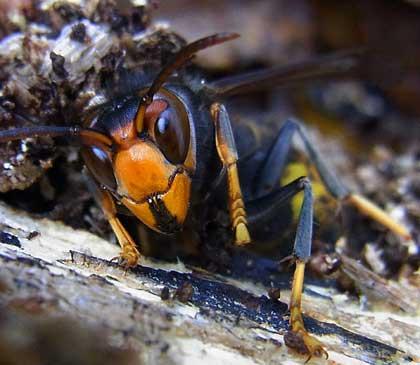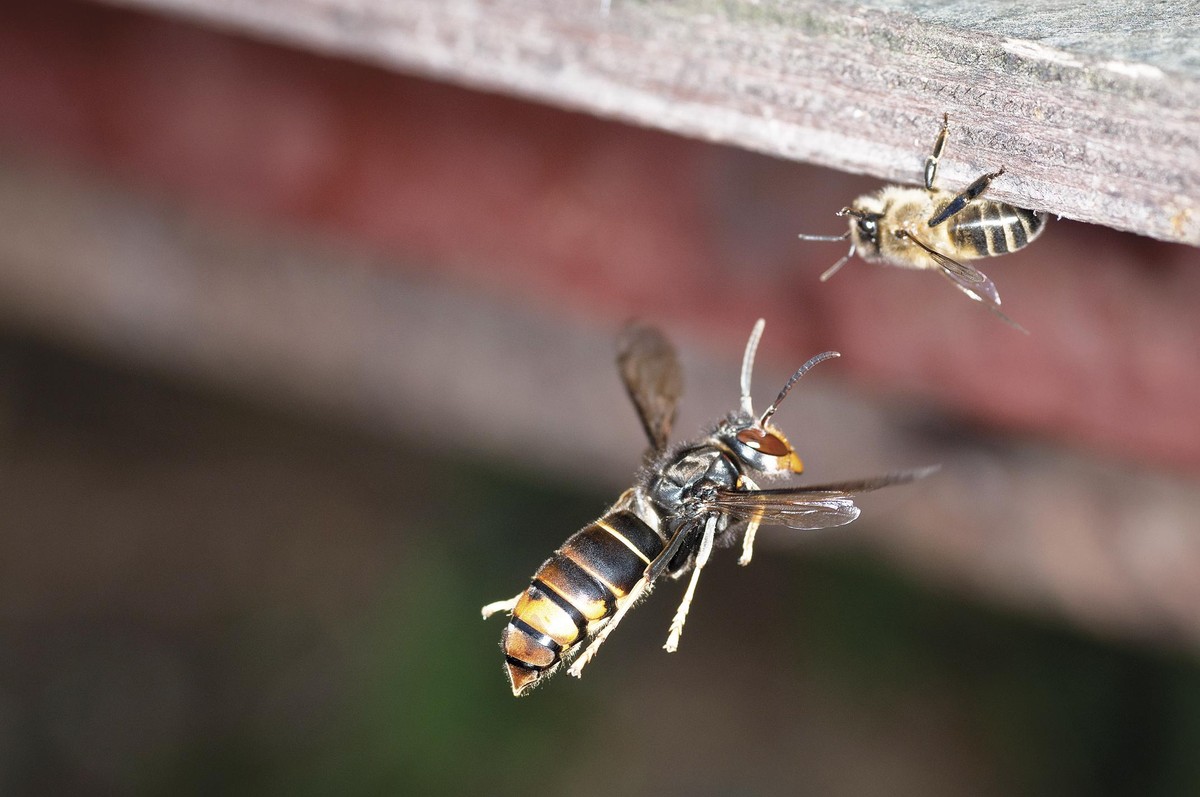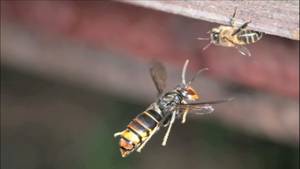From Asia to Euskal Herria, to eat bees
2010/11/23 Aulestiarte Lete, Izaro - Elhuyar Zientziaren Komunikazioa

There above we have a Chinese wasp of the species Vespa velutina nigrithorax. It has about 33 millimeters, is practically black, with yellow and orange segments. He has visited Euskal Herria, but his visit is uncomfortable. This is what the Basque beekeepers affirm, who fear for the great damage it can cause in their hives.
This invasive species enters beehives and feeds on bees. Its main food is the common bee, able to finish two weeks with a whole colony of bees. Nidifica in trees and attic between four and six meters high, and each can contain about 1,800 wasps, eye!
Apparently, the Chinese wasp entered Europe from the port of Bordeaux, in a container no one had inspected in 2004. Its natural ecosystem is that of the countries of Southeast Asia, but it seems that it has also adapted to the climate of the countries of southern Europe. Researchers from the Neiker-Tecnalia centre have announced the colonization of half of France in four years, and during these days the Gipuzkoa Beekeepers Association has warned that species have already been found in the surroundings of Irun, Hondarribia and Oiartzun.
Concerned about the damage it can cause, Basque beekeepers will take two measures: on the one hand, put traps to hunt wasps and, on the other, try to destroy the nests they find.
Image: Image: JARRAITU. Some rights reserved: CC, share the same.

Gai honi buruzko eduki gehiago
Elhuyarrek garatutako teknologia





